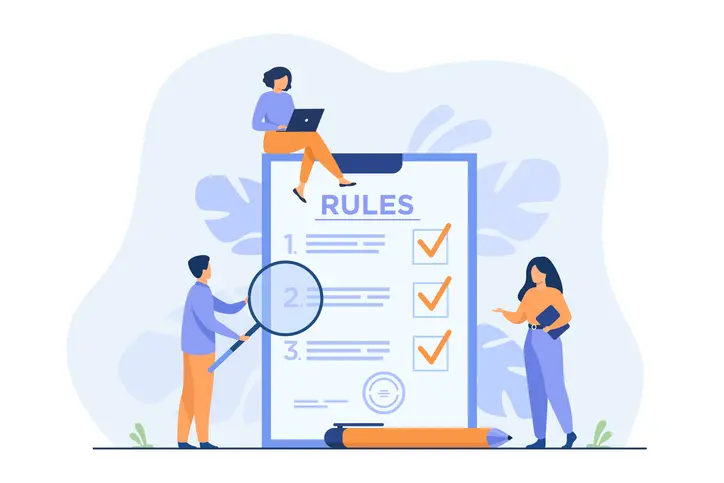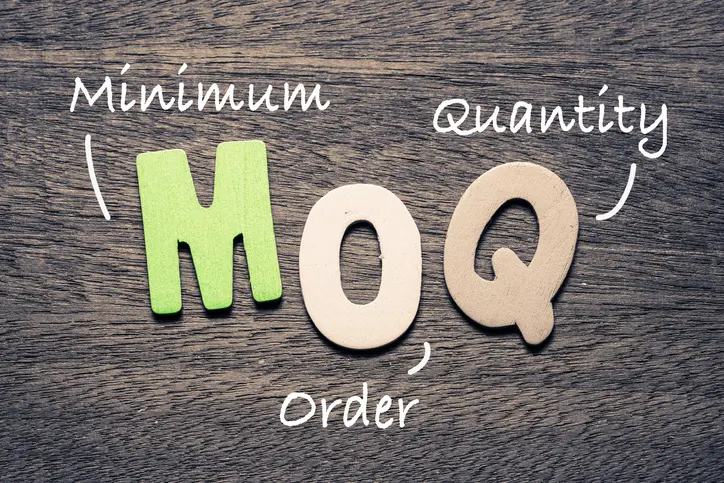Lost sales occur when potential transactions fail to materialise, leading to direct revenue losses. Common causes include stockouts, pricing issues, inadequate customer service, and unmet customer needs. This challenge significantly affects profitability, customer loyalty, and operational efficiency, particularly in industries like retail, manufacturing, and e-commerce. Understanding and addressing issues such as lost sales analysis is essential for maximising revenue, improving customer satisfaction, and achieving business success.
What Are Lost Sales?
Lost sales occur when a business fails to convert potential customer interest into purchases. Common causes include stockouts, where insufficient inventory prevents customers from completing transactions, uncompetitive pricing, and unmet customer needs, such as limited product options or lack of essential features. These factors highlight the critical need for businesses to address inventory, pricing, and product offerings to retain customers and maximise revenue.
The Impact of Lost Sales on Business
Lost sales affect more than immediate revenue, disrupting operations and jeopardising long-term sustainability. Proactively addressing this issue is essential for achieving sustained growth and business success.
Revenue and Profitability
Lost sales directly impact revenue and profit margins. Each missed opportunity reduces income, with consistent stockouts or unmet demand compounding financial losses. For instance, losing 50 sales daily at $50 per transaction results in $75,000 in monthly losses, significantly harming financial health and growth potential.
Customer Retention and Loyalty
Recurring lost sales erode customer trust and satisfaction. Issues like stockouts drive customers to competitors, reducing retention and loyalty. Negative experiences may also harm the business’s reputation through word-of-mouth.
Operational Efficiency
Lost sales disrupt operational efficiency, leading to overstocking, increased warehousing costs, or obsolescence. Underestimating demand causes stock shortages, production delays, and inefficiencies, increasing costs and hindering productivity.
Streamline your S&OP and never look back!
Common Causes of Lost Sales
Lost sales stem from internal factors, such as operational inefficiencies and inadequate customer service, and external factors, including market shifts and supplier disruptions. Identifying these root causes is essential for effective mitigation strategies.
Internal Factors
Internal factors are controllable elements within a business, such as operational inefficiencies and poor processes, which can be improved through strategic adjustments and optimisation.
Product-Related Issues
Poor product quality, lack of essential features, or a limited range can drive customers to competitors. Products must meet customer expectations, as subpar quality or missing functionalities lead to lost sales opportunities.
Pricing Problems
Incorrect pricing, whether too high without justified value or too low causing quality concerns, deters customers. Striking a balance with dynamic pricing aligned to market demand and competition is crucial to avoid lost sales.
Sales Process Inefficiencies
Slow responses, complex workflows, or poor follow-ups in the sales process frustrate customers and lead to lost opportunities. Streamlining processes and ensuring clear, timely communication can enhance the customer experience.
Customer Service Failures
Delays, poor communication, or unresolved issues in customer service erode trust and loyalty, pushing customers to competitors. Excellent support and prompt issue resolution are vital for retaining customers and preventing lost sales.
External Factors
External factors, outside a company’s control, demand strategic adaptation and proactive measures to reduce their impact on sales.
Competition
Competitors offering better products, pricing, or services can draw customers away. Businesses must innovate, enhance their offerings, and adapt strategies to remain competitive.
Economic Conditions
Economic downturns or inflation can reduce consumer spending, leading to fewer sales opportunities. Adapting strategies, such as offering discounts or focusing on value-driven products, helps mitigate these challenges.
Technological Advancements
Failing to adopt new technologies or adapt to trends risks alienating modern consumers. Businesses must embrace innovation, such as online purchasing and mobile-friendly platforms, to stay relevant and competitive.
Methods for Identifying Lost Sales
Identifying lost sales involves analysing data and using tools like predictive analytics to uncover patterns and trends. These methods help businesses pinpoint underlying issues and recover potential revenue effectively.
Sales Data Analysis
Examining historical and real-time sales data helps uncover patterns like seasonal trends, product-specific issues, or customer purchasing behaviors. Tools and dashboards can pinpoint areas where sales are being lost, such as stockouts or pricing concerns.
Customer Feedback and Surveys
Direct input from customers through surveys and reviews provides valuable insights into reasons for lost sales, such as dissatisfaction with products or complicated checkout processes. This feedback offers actionable guidance for improvements.
Competitor Performance Analysis
Benchmarking competitors’ pricing, products, and customer service highlights areas where a business is underperforming. Monitoring competitor strategies helps identify lost sales opportunities and inform necessary adjustments.
Predictive Analytics and Machine Learning
Predictive analytics and machine learning tools forecast potential lost sales by analysing data and trends. These technologies help prevent stockouts, identify at-risk customers, and implement retention strategies to minimise revenue loss.
Change the way you view business with unrivalled insights on Predictive Analytics.
The Lost Sales Analysis Process
A comprehensive lost sales analysis follows a structured approach, enabling thorough investigation of issues and effective implementation of solutions to address revenue losses.
Step 1: Define Key Metrics
Identify relevant metrics to measure lost sales, such as conversion rates, inventory turnover, and customer satisfaction scores. These provide clear insights into sales performance and areas for improvement.
Step 2: Collect Relevant Data
Gather data from sources like CRM systems, sales platforms, and customer surveys. Ensure data accuracy and completeness to support reliable analysis.
Step 3: Identify Patterns and Trends
Analyse collected data to uncover recurring patterns or anomalies, such as consistent drops in sales during specific periods or common customer complaints.
Step 4: Conduct Root Cause Analysis
Investigate the underlying reasons behind lost sales by asking “why” repeatedly. Prioritise addressing the most impactful root causes, such as checkout issues or poor website performance.
Step 5: Implement Solutions and Monitor Progress
Apply targeted solutions based on analysis findings, such as improving processes or enhancing customer experiences. Continuously track key metrics to evaluate the effectiveness of implemented solutions and make adjustments as needed.
Tools and Techniques for Lost Sales Analysis
Various tools and techniques streamline the lost sales analysis process, enhancing efficiency and providing deeper insights into sales performance and areas for improvement.
Customer Relationship Management (CRM) Systems
CRM systems centralise customer data, tracking purchase history, communications, and feedback. They help identify lost sales patterns, automate follow-ups, and personalise interactions to improve customer relationships and reduce lost opportunities.
Sales Analytics Software
Sales analytics tools provide forecasting, dashboards, and reporting to track sales performance and identify issues. These insights enable businesses to make data-driven decisions and optimise strategies to minimise lost sales.
Inventory Management Systems
Inventory management systems offer real-time stock tracking, automated replenishment, and inventory movement monitoring. They help prevent stockouts and overstocking, ensuring product availability and reducing lost sales.
Business Intelligence and Visualisation Tools
BI tools analyse operations, identify trends, and highlight lost sales areas using visual dashboards and reports. These tools simplify complex data, enabling businesses to quickly pinpoint issues and implement solutions.
Strategies to Minimise Lost Sales
Proactive strategies are crucial for reducing lost sales, ensuring sustained growth and profitability through improved processes, customer satisfaction, and operational efficiency.
Improving Inventory Management
Optimise inventory levels using techniques like just-in-time management, demand forecasting, and regular audits to ensure product availability and minimise stockouts.
Enhancing Customer Experience
Provide seamless experiences through personalised service, streamlined purchasing processes, and responsive support. User-friendly designs and tailored recommendations help retain customers and reduce lost sales.
Dynamic Pricing Strategies
Adopt flexible pricing to adjust based on demand, inventory, and competition. Use price optimisation tools and competitor analysis to remain competitive and maximise revenue.
Leveraging Marketing Insights
Analyse customer behaviour and preferences to develop targeted campaigns. Personalised emails, exclusive offers, and abandoned cart recovery strategies help recapture lost opportunities.
Training Sales Teams
Equip sales teams with skills in objection handling, product knowledge, and customer engagement. Ongoing training ensures teams are prepared to maximise sales and address customer needs effectively.
Why Analysing Lost Sales Is Crucial for Businesses
Lost sales analysis is essential for strategic decision-making, improving customer loyalty, and driving business growth. It helps businesses address underlying issues, optimise operations, and achieve sustainable success.
- Improved Customer Satisfaction: Resolving issues like stockouts and poor service enhances customer experience, fosters loyalty, and encourages repeat purchases and referrals.
- Increased Sales and Revenue: Addressing root causes leads to higher sales and revenue through optimised inventory, pricing, and sales processes.
- Enhanced Operational Efficiency: Streamlined processes, better inventory management, and technology adoption reduce costs, improve resource allocation, and boost agility.
By systematically analysing lost sales, businesses can:
- Identify operational weaknesses.
- Prioritise impactful actions to address root causes.
- Enhance competitiveness by staying ahead of market changes.
- Foster innovation in products, services, and processes.
Industries like retail, manufacturing, and e-commerce face significant impacts from lost sales due to high competition, inventory turnover, and fluctuating demand. Effective lost sales analysis unlocks opportunities for growth and ensures long-term success.
The future of your business is integrated and harmonised. Let Intuendi take you there.






